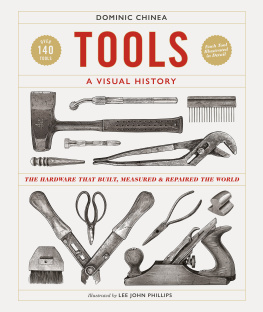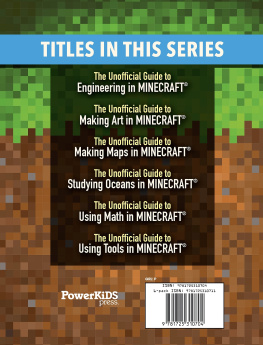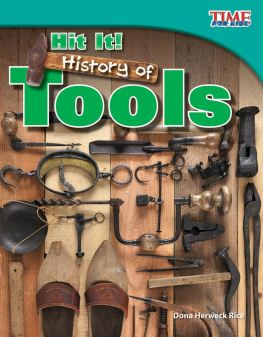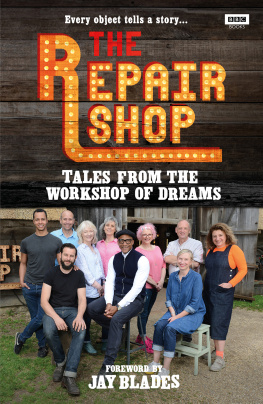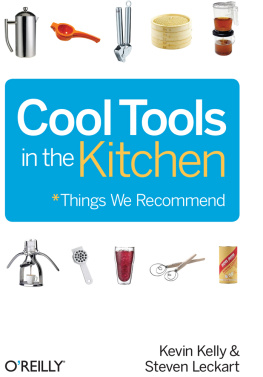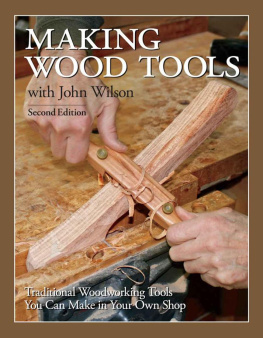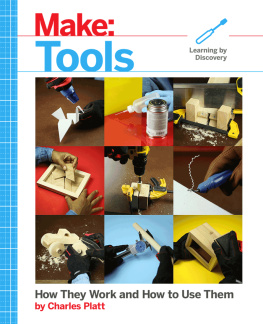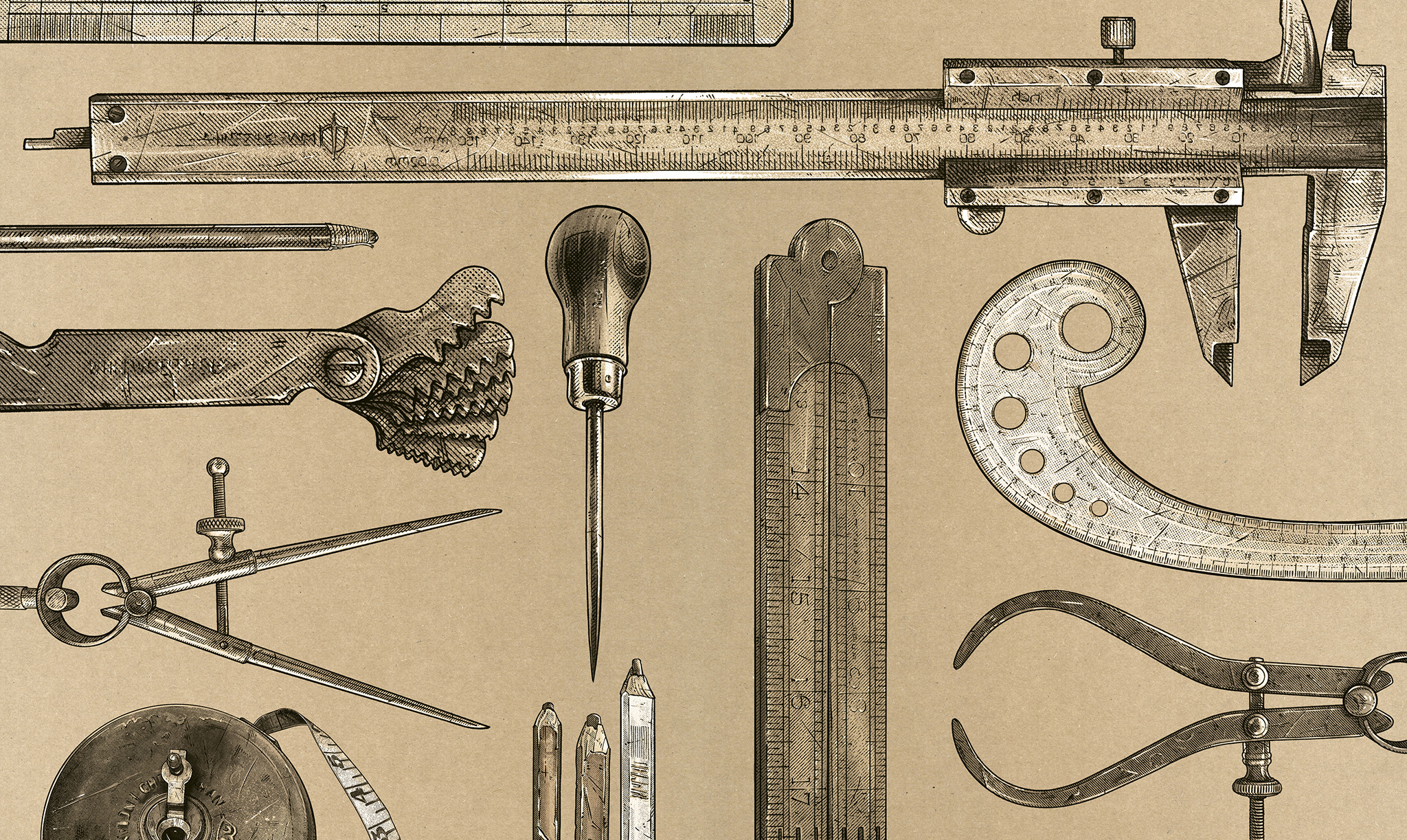INTRODUCTION
I get asked a lot what my favourite tool is, and its an impossible question to answer because it depends on what Im doing at that moment in time. Some days, when Im staring at a nut that used to be hexagonal and its so rusty that it wont undo, my favourite tool is the old, misshapen spanner that wiggles it free. I might not use that spanner for another three years, but wow, Im grateful that I bought it at that car boot sale 15 years ago! I think thats part of the reason why I like collecting old hand tools, because at some point theyll be the only thing to help you out of a tight spot. I spend a lot of time looking for tools and bits of equipment in car boot sales. Sometimes Ill have a vague plan of what I might do with it, and sometimes not. I buy almost everything second-hand, but on the odd occasion I do buy new tools, theyre usually made by craftspeople who are continuing or have revived a centuries-old tradition.
Sometimes I come across a hand tool displaying such stunning craftsmanship that I just marvel at the skill and dedication that someone has committed to their craft. I love that feeling of finding the diamond in the rough. I see myself as a kind of custodian of tools; Ill look after them, and eventually, when the time is right, Ill give them to someone who I know will love and cherish them along with any wisdom Ive gleaned on the way. Thats what heritage craft is all about.
Ive found myself in a uniquely privileged situation on The Repair Shop, in a job thats impossible to train for. Im learning all the time as Im going, but a lot of the work isnt just about practical skills. Much of it comes down to putting yourself into someone elses shoes, imagining how they tackled something and wondering which tools they used. I go into my workshop each day excited about whats going to land on my workbench. And when it does, I always feel lucky to have been trusted to work on that precious item.
A question I get asked often is if Ive ever had something I cant fix. Things go wrong a lot the very nature of The Repair Shop is tackling difficult-to-repair objects, but you learn to work out how to solve each problem in turn. Pete, our musical-instrument repairer, always jokes that being a professional at something means knowing how to get yourself out of trouble (although he says it a little stronger than that). Hes right, because the buck stops with you, and its not like we can blame our tools!
One of the items Ive worked on at The Repair Shop that Ill remember for the rest of my life was an old hand tool: a hammer with a loose head. The chap who brought it in told me that his beloved grandad had used that hammer for everything, including building his house, and his grandson wouldnt ever give up on it because he never wanted to lose that connection to his grandad. The handle was weirdly twisted and bent, and the end of the handle was completely flat and full of bits of ply. Little screws and nails were only just holding it together. It had clearly had an amazing life, so I didnt want to be the one to say it needs a new handle. It wasnt for me to give up on it. So I gave it a go, steaming it straight, then clamping it in three directions. Ive never been more nervous working on an object. The handle kept bending and bending, and I was terrified it might just snap. But I convinced myself that it was alright if it did, because at least Id tried. So some of the chaps grandads life lessons were rubbing off on me as well.
In the end, I filed down the head so it ended up sitting a bit lower on the handle. I cleaned the head but didnt buff it up to a mirror polish because I didnt want it to become just any other hammer. I wondered about adding his grandads initials to it for ages. It was a hard decision because once you commit to it, theres no going back. But I did commit. The time, respect and determination paid off (and luck probably paid its part too) and the chap was hugely moved. And that old hammer will get used again. Who knows what itll be used to make in the future, but its already got quite a tale to tell.
I love reviving incredible crafting techniques, tools and pieces of equipment that are in danger of falling by the wayside. But the one closest to my heart is the wheeling machine (also known as an English wheel). An amazing piece of equipment, it has a huge cast-iron frame leading to two ground and polished steel wheels that you feed sheet metal back and forth through to produce curves. Many coachbuilders (craftspeople who make the bodies of cars, buses and railway carriages) in the 1920s and 1930s used them, but only one actually made their own wheeling machine: Ranalah, and they produced the Rolls Royce of wheeling machines, which is fitting, seeing as Ranalah helped produce Rolls Royces.
Around 2m (7ft) tall, 1.2m (4ft) wide, weighing just under 1,000kg (1 ton) and shaped like a giant C, the Ranalah English wheel is an icon. I fell in love with that company and the wheel so much that I ended up buying the rights to produce the wheels again under the Ranalah name. But that was only half the battle. I had to actually find an original Ranalah so that I could use it as the template to cast the first Ranalah English wheel made in 90 years. Now, I want to make these English wheels available to as many people as possible, from engineering firms keen to preserve our industrial heritage to younger people who want to take up the craft.
In this book, youll find over 140 hand tools, many of which have remarkable stories of their own. Some of the tools will take you back to your dads toolbox, nans sewing box, your grandparents shed or maybe even your first woodworking class at school.
I love the unique connection old tools give you to the past; also, tools back then were usually made with care, treated with respect and built to last. Continuing that tradition is what I do for a living, and I wouldnt have it any other way.
Over time, tools become your friends you spend so much time with them, they help you out and you come to rely on them.
DOMINIC CHINEA
g
CHAPTER 1
MEASURING & MARKING
Measuring & Marking | Contents
g
Tool No.
CARPENTERS RULER
A carpenters ruler is a folding ruler with metal (usually brass) ends and a central arched joint. Many older carpenters rulers were made of boxwood, which starts off a light cream or yellow colour then develops a beautiful honey or toffee patina over time. The only trouble with boxwood is that it warps. Thats why the brass edges are fitted to hold the wood in position.

